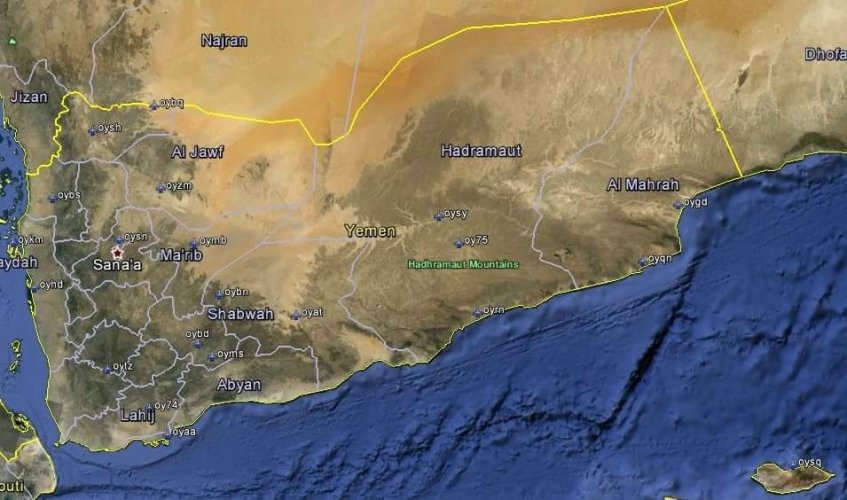
𝟮𝟭 𝗳𝗮𝗰𝘁𝘀 𝘆𝗼𝘂 𝗱𝗶𝗱𝗻'𝘁 𝗸𝗻𝗼𝘄 𝗮𝗯𝗼𝘂𝘁 𝗬𝗲𝗺𝗲𝗻:
1. Yemen, located on the southern tip of the Arabian Peninsula, is often referred to as the "Arabian Felix," meaning "Happy Arabia" in Latin, due to its fertile land and rich cultural heritage.
2. The capital and largest city of Yemen is Sana'a, one of the oldest continuously inhabited cities in the world and a UNESCO World Heritage Site.
3. Yemen is the only country in the Arabian Peninsula that does not have oil as a significant source of revenue, relying instead on agriculture, fisheries, and remittances from Yemenis working abroad.
4. The country's unique architecture, characterized by towering mud-brick buildings adorned with intricate geometric patterns, has earned it the nickname "The Manhattan of the Desert."
5. Yemen is known for its rich history and heritage, with the ancient civilizations of Saba, Ma'in, and Himyar flourishing in the region thousands of years ago.
6. The Old City of Shibam, often called the "Manhattan of the Desert," is home to the world's oldest skyscrapers, mud-brick tower houses that date back over 500 years.
7. Yemen is home to Socotra, an archipelago in the Indian Ocean renowned for its otherworldly landscapes and unique biodiversity, including the iconic dragon's blood tree.
8. Yemeni cuisine is diverse and flavorful, featuring dishes like mandi (slow-cooked meat and rice), saltah (a spicy stew), and the famous Yemeni honey, considered among the best in the world.
9. Yemen has a rich cultural heritage of poetry, music, and dance, with traditions dating back centuries and deeply rooted in Arab and Islamic culture.
10. The Great Marib Dam, built over 2,800 years ago, is one of the oldest and most significant engineering marvels in the Arabian Peninsula, providing water for agriculture and settlements in ancient Yemen.
11. Yemen is home to some of the oldest mosques in the world, including the Great Mosque of Sana'a, which dates back over 1,400 years and features unique architecture and design.
12. The Bab al-Yemen (Yemen Gate) in Sana'a is a historic gateway to the old city, adorned with intricate carvings and surrounded by bustling markets and traditional shops.
13. Yemen's rugged landscapes include towering mountains, vast deserts, and fertile valleys, offering breathtaking scenery and opportunities for adventure tourism like hiking and camping.
14. Yemen's coffee, known as "Mocha" after the Red Sea port from which it was exported, has been prized for its rich flavor and aroma for centuries, with Yemen being one of the earliest coffee-producing regions.
15. The Yemeni island of Socotra is home to a unique and diverse ecosystem, with over 700 endemic species of plants and animals found nowhere else on Earth.
16. Yemen's rich maritime history includes the ancient port city of Aden, a strategic hub for trade and commerce on the Arabian Sea, and the historic island of Perim, located at the entrance to the Red Sea.
17. Yemen's traditional clothing, such as the jambiya (a curved dagger worn by men) and the colorful dresses and veils worn by women, reflect the country's cultural diversity and heritage.
18. Yemen's honey is renowned for its quality and purity, with Yemeni honeybees producing a variety of honey types, including sidr honey, which is considered one of the finest in the world.
19. Yemen's ancient city of Zabid, a UNESCO World Heritage Site, was once a center of Islamic learning and scholarship, boasting one of the oldest mosques and universities in the Islamic world.
20. Yemen's traditional music, known as Yemeni music or Yemeni folk music, is characterized by its haunting melodies, rhythmic beats, and poetic lyrics, often accompanied by traditional instruments like the oud and qanbus.
21. Despite its challenges, Yemeni people are known for their resilience, hospitality, and strong sense of community, with cultural traditions and social bonds playing a crucial role in daily life.
